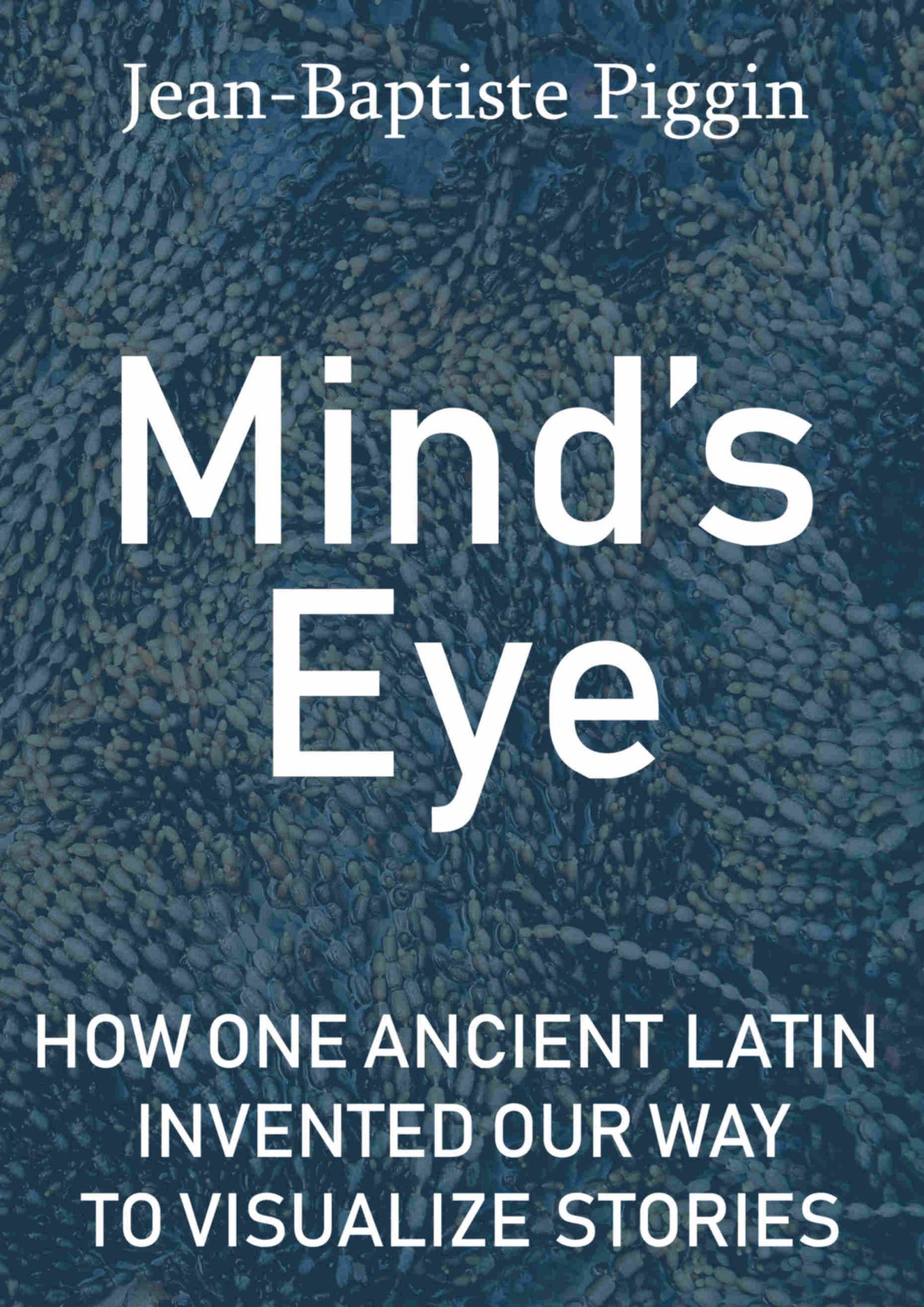Readers of this blog will recall that the names of many biblical characters in the Great Stemma are spelled in the fashion of the earliest Latin bibles, rather than in the forms prescribed by Jerome of Stridon in his Vulgate retranslation of the fifth century. I noted in my
Studia Patristica paper that the original names in the diagram would seem to have been immune to Jerome's influence (although one must be cautious in guessing why) and that this was especially emphasized by Yolanta Zaluska:
Among the examples she isolates is Chor (Gen. 36:22), from the personal name Chorri in the Septuagint and Vetus Latina, which Jerome had amended to Horrei. Zaluska also detected the Vetus Latina name of a Horrite chief – Ucan – which Jerome had suppressed, as well as another name, Chat, which had arisen through scribal error in the Great Stemma’s transmission. Both names continued to be reproduced in the Great Stemma into the high medieval period although they were no longer current in the Genesis narrative.
I have undertaken various attempts to quantify just how many of the 540 names are present in the diagram in their Vetus Latina forms. Two years ago I wrote a
long blog post on a statistical project to distinguish the variants and seek salient points in the data. The effort was rather inconclusive, partly because my methods were rather basic ones.
A recent article by Philip Burton (all references below) points to a possible way forward. Certain ordinary Greek words can be and were translated in alternative ways in Latin: Burton compares how those words are handled by Vetus Latina translators in seven cases and shows the results in a "distance chart of agreements" (page 187). He mentions that he gave a paper in 2008 offering hundreds of such comparisons. It might be useful for a future scholar to employ Burton's method to compare names in the Great Stemma manuscript.
Many other difficulties remain. Not only is it hard to distinguish Vetus Latina variants from bizarre scribal errors. We also simply don't know in many cases what the Vetus Latina text actually said.
Very little of
1 Kings and
2 Kings, two books that are of central importance to the Great Stemma, even survive. Natalio Fernández Marcos, the great Spanish biblical scholar, estimates in
Scribes and Translators (page 44) that 90 per cent of what we know of the Vetus Latina version of
1-2 Kings derives from just three very fragmentary sources - the
Opuscula of Lucifer of Cagliari, a Naples
palimpsest and marginal glosses to several Spanish bibles.
In addition, the manuscript tradition for more substantial sections of the Vetus Latina is not entirely reliable either. As Burton has pointed out, even the question of whether there was just one translation or many remains a moot point in current scholarship. Even the tradition of the Vulgate, often thought of as fixed, retains uncertainties in its transmission. So it will never be possible to take all 540 of the Great Stemma names and fix what proportion have Vetus Latina origins beyond any doubt.
In the past two weeks I have returned to the issue because I need to summarize this matter concisely in my planned book. Among the results: on my website, there is a new
tabulation of Vetus Latina reconstructions of the 14 names of women in
1-2 Kings where each name is traced back to the Septuagint. The extreme corruption in the graphic organization of these names in the Great Stemma makes the passage an especially good pointer to the primitive Vetus Latina forms.
In addition, I have done a little more checking of how five of the most salient changes fared in the Vulgate tradition, checking the names usage in the 1926-1995
Biblia Sacra iuxta Latinam Vulgatam versionem where the manuscripts are compared. I was surprised to find how often the Vetus Latina forms crept back into the text, particularly in Spain.
| Septuagint |
Vetus Latina |
Vulgate |
Ref. |
Changes |
Notes |
| μαλελεηλ |
Maleleel |
Malalehel |
Gen 5:12, 5:15 |
e to a, insert h |
Printed Vulgates 1530-1592 employed the VL form |
| φαλεκ |
Phalech |
Faleg |
Gen 10:25 |
ch (k) to g |
Faleg in largest number of witnesses, but Falech, Falec, Falleg,
Phaleg, Phaleg (first printed Vulgates), Phalech also recorded |
| χορρι |
Chorri |
Horrei |
Gen 36:22 |
from ch (χ) to h |
Horrei in largest number of witnesses, but Horraei, Orrei, Hori
(first printed Vulgates), Horri and Orri also recorded |
| ζουκαμ |
Zucam |
Zevan |
Gen 36:27 |
middle consonant from c (g) to v (b) |
Zeuan in largest number of witnesses, but Zeban, Zeuam, Zefan,
Zephan, Zenan, Zauan (first printed Vulgates), Euan also recorded |
| βηρσαβεε |
Bersabee |
Bethsabee |
2Sam 11:3, 12:24 |
second consonant from r to th |
Bethsabee in most witnesses, but Bethsabȩȩ, Bethsabe, Betsabee, Betsabeȩ, Bersabee (6 witnesses), Bersabeȩ, Bersabȩȩ and Bersabe also recorded |
The last of these cases is particularly interesting. Jerome preserved Bersabee as the name of the city in the southern desert in Genesis 22 (see a discussion by Rico), but there can be no doubt whatever that he desired to suppress Bersabee as the name of Solomon's mother and amend this to Bethsabee. Yet it re-infected "his" text soon enough. The Bersabee witnesses are: Madrid RAH 2, Burgo 2, Milan Biblioteca
Ambrosiana B48, Vat. lat. 10510 (2nd Bovino Bible), Paris 15467, Mazarine 5 (all Bersabee), Madrid Mus. Arch. 485 (Bersabeȩ) and Madrid Bib. Nat. A2 (Bersabȩȩ).
Among the other instances, it is notable that Malaleel even crept back into early printings of the Vulgate before it was expunged.
This exercise has tested and confirmed the hypothesis that most Vetus Latina forms of the biblical names turn up in the Great Stemma, sometimes in quite bizarre transformations. For Zucam, the variety of readings in the diagram include Zugat and Zucat. It remains difficult to imagine any process by which the Great Stemma could have been drafted using a mixed supply of Vetus Latina and Vulgate forms of the names. The hypothesis that it was drawn up with the aid of a Vetus Latina bible and was fitfully altered later to match Jerome's spellings is the only one sustainable in the court of common sense.
Burton, Philip. “The Latin Version of the New Testament.” In
The Text of the New Testament in Contemporary Research: Essays on the Status Quaestionis, edited by Bart D. Ehrman and Michael W. Holmes. 2nd ed. Brill, 2012.
Google Books
Fernández Marcos, Natalio.
Scribes and Translators: Septuagint and Old Latin in the Books of Kings. Vetus Testamentum / Supplements. Brill, 1994.
Google Books
Moreno Hernández, Antonio.
Las glosas marginales de Vetus Latina en las Biblias Vulgatas Españolas: 1-2 Reyes. Textos y estudios “Cardenal Cisneros.” Madrid: Editorial CSIC, 1992.
Google Books
Rico, Christophe. “La Traduction Du Sens Littéral Chez Saint Jérôme.” In
Le Sens Littéral des Ecritures, edited by Olivier-Thomas Venard, 171–218. Collection Lectio Divina, Hors Série. Paris: Editions du Cerf, 2009.
Academia.edu.


